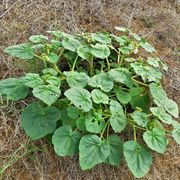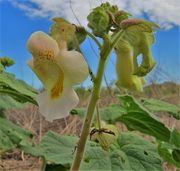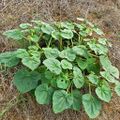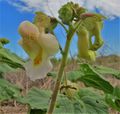Difference between revisions of "Devil's claw"
Jump to navigation
Jump to search
| Line 20: | Line 20: | ||
<gallery> | <gallery> | ||
| − | File:Devils claw plant Vorderbruggen.jpg|Devil's claw plant; image credit | + | File:Devils claw plant Vorderbruggen.jpg|Devil's claw plant; image credit Burr Williams |
| − | File:Devils claw flower Vorderbruggen.jpg|Devil's claw flower; image credit | + | File:Devils claw flower Vorderbruggen.jpg|Devil's claw flower; image credit Burr Williams |
| + | File:Devils claw flicker.jpg|Devil's claw seed; image credit Terri Cox | ||
</gallery> | </gallery> | ||
Revision as of 09:30, 12 October 2020
Description
An uncommon annual plant (Proboscidea altheaefolia, Proboscidea parviflora) that is native to arid area in southwestern United States. Devil's claw was named for its large seed pods with hooked ends. The mature pods turn black or brown and split open. Fibers from these pods were used for weaving baskets.
Another plant, found in South Africa Harpagophytum procumbens is also called "devil's claw"
Synonyms and Related Terms
Proboscidea altheaefolia; Proboscidea parviflora; black martynia; devil's horn; unicorn plant
Personal Risks
Physical and Chemical Properties
Working Properties
Additional Images
Resource and Citations
- Foraging Texas [website]
- Wikipedia:




